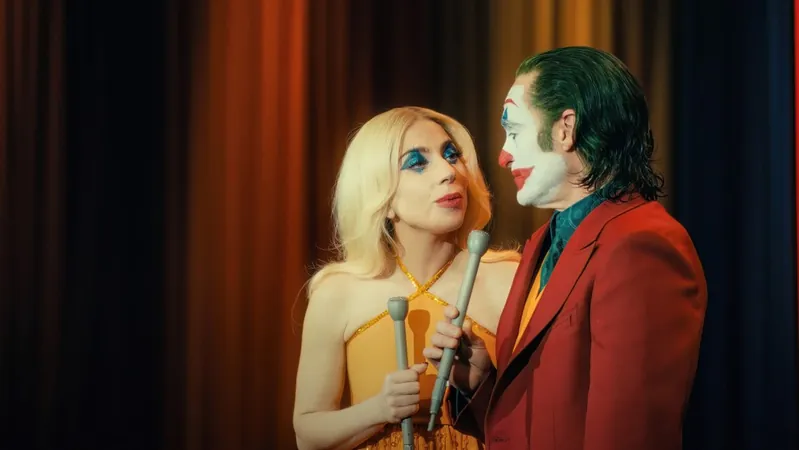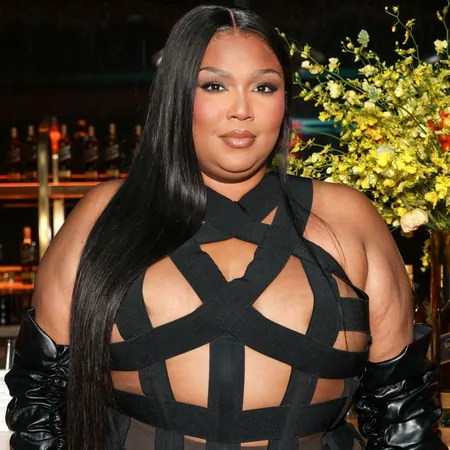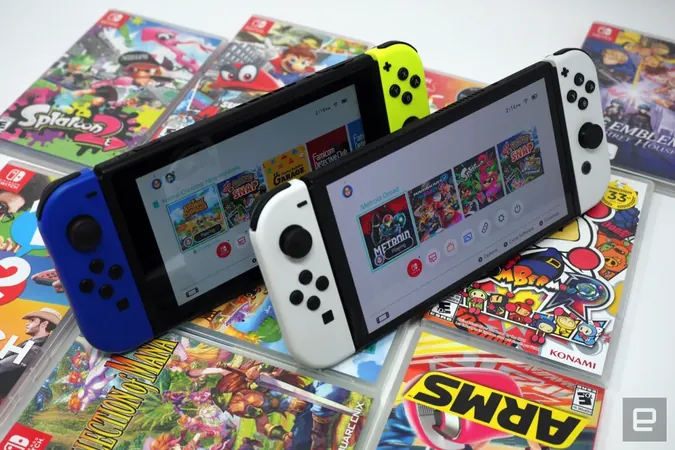
Behind the Curtain of ‘Joker: Folie à Deux’ Disastrous Debacle: Why Todd Phillips Ignored the DC Universe
2024-10-08
Author: Ling
Electric Premiere and Notable Absences
On September 30, the atmosphere was electric outside the TCL Chinese Theatre as Lady Gaga charmed fans with kisses, while Joaquin Phoenix cracked a rare smile on the red carpet ahead of the much-anticipated premiere of “Joker: Folie à Deux.” Warner Bros. Discovery CEO David Zaslav also made a splash at the after-party, mingling with the star-studded cast as they enjoyed vegan sliders inspired by Phoenix himself. However, amidst the glitz and glamour, a notable absence loomed—DC Studios heads James Gunn and Peter Safran were nowhere to be seen, and insiders claim their absence highlights serious turmoil behind the scenes of the musical.
Phillips' Creative Independence
Sources reveal that Todd Phillips, the film's director, reportedly "wanted nothing to do with DC" while crafting the sequel, a choice that allowed him to bypass oversight from the franchise’s custodians. Although both Gunn and Safran have shown public support for the film, it appears that Phillips has chosen to distance himself from the very universe that promises enormous fan engagement. The decision was further emphasized when the opening title sequence rolled, forever sealing his antagonism with the brand by omitting the DC Studios logo entirely.
Audience's Anticipation and Poor Reception
A close insider commented on the movie's potential success, stating, “If the first movie involved a down-and-out, mentally ill character in a struggling city, it would likely gross around $150 million globally—not $1 billion.” The implication is clear: fans turned out for the character of the Joker, not merely for a film that strayed from the established canon.
Following this lackluster opening weekend, which grossed a shocking $37.7 million domestically, many are left pondering the rationale behind spending $200 million on a project that purposely sidesteps its core audience. Critics were quick to express their disappointment, with one review from Rolling Stone succinctly encapsulating the sentiment as a message to fans that reads: “Go F-ck Yourselves.”
Historical Context and Studio Uncertainty
Historically, the character of Joker is one of the most iconic villains in comic book lore, transcending not only DC but also the broader comic universe. However, the gamble with Phillips—a director known for his previous successes with “Joker” and the “Hangover” trilogy—meant that studio executives Michael De Luca and Pamela Abdy were cautious about putting their foot down when it came time to greenlight the sequel.
Production began in December 2022, just two months after the new leadership took the reins in the DC cinematic universe. Many had hoped for Gunn and Safran to provide pivotal feedback on the project, especially given its hefty budget. Yet, Phillips refused to involve DC in any significant way, communicating solely with De Luca and Abdy. When asked if the regime change had altered the pipeline or his approach to the project, Phillips remarked, “With all due respect to them, this is kind of a Warner Bros. movie,” reinforcing the disconnect between the creative vision and the overarching corporate strategy.
Internal Struggles and Financial Fallouts
The internal struggles didn’t stop there. Reports indicate that Zaslav personally proposed cost-effective filming options, suggesting Los Angeles over the more expensive London, but Phillips remained steadfast in his vision, resulting in a bloated budget aimed to exceed the already risky financial expectations. Those internal disputes extended to the Venice Film Festival, where Phillips insisted on debuting the film despite studio hesitations.
The fallout has been stark. “Joker: Folie à Deux” fared poorly with both audiences and critics, racking up only a 33% rating on Rotten Tomatoes and garnering a “D” CinemaScore—an unfortunate indicator of the film’s reception compared to other recent releases. The film needed to gross roughly $450 million to break even, a now dubious prospect as the company grapples with numerous underperforming projects.
Market Reactions and Future Implications
Wall Street analysts have voiced severe critiques of Warner Bros.‘ strategy during this dark period. With the company’s stock price hovering near an all-time low, expectations for big hits like this sequel have disintegrated into a collective sigh of despair, further complicating Warner’s financial prospects at a critical juncture.
Fans are left questioning whether the absence of Bradley Cooper, who served as a producer on the original “Joker” and is known for his adept commercial instincts, played a role in the film's fate. His previous collaboration with Phillips had buoyed expectations, and without his insight, the sequel missed the mark.
Concluding Thoughts on a Troubled Production
As insiders observe, “No one could get through to Todd.” This stark distance from fan expectations signifies a perilous precedence in genre filmmaking. The ambitious 10-year plan introduced by Zaslav aimed to emulate Marvel’s cohesive storytelling, but the “Joker” sequel charted its course far away from that vision. The ultimate result? A marked and embarrassing setback for Warner Bros. during a time when they could least afford it—and a rift with their audience that may take years to mend.


 Brasil (PT)
Brasil (PT)
 Canada (EN)
Canada (EN)
 Chile (ES)
Chile (ES)
 España (ES)
España (ES)
 France (FR)
France (FR)
 Hong Kong (EN)
Hong Kong (EN)
 Italia (IT)
Italia (IT)
 日本 (JA)
日本 (JA)
 Magyarország (HU)
Magyarország (HU)
 Norge (NO)
Norge (NO)
 Polska (PL)
Polska (PL)
 Schweiz (DE)
Schweiz (DE)
 Singapore (EN)
Singapore (EN)
 Sverige (SV)
Sverige (SV)
 Suomi (FI)
Suomi (FI)
 Türkiye (TR)
Türkiye (TR)